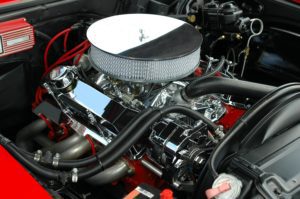
Diversity is like the car engine of your workplace. An engine is a collection of parts that run more productively when everything works together. Within your team, there are a variety of people, all with human qualities, that have different ways of viewing the world. This collection of people also works more productively when everyone works together. It takes all these different parts of your workforce utilizing their skills to make up a cohesive team.
As far back as a century ago, the Academy of Management noted that an organization’s ability to attract, retain, and motivate people from diverse cultural backgrounds might lead to competitive advantages in cost structures. This principle is as true today as it was then. In a recent Hays Recruiting article, diversity and inclusion were found to also lead to better problem-solving skills, enhanced creativity, and improved soft skills.
To find the potential within a diverse workplace, you need to create an environment that appreciates these distinctions and finds a way to utilize individual skills instead of focusing on people’s differences. Here are a few elements you can integrate into your workplace to help manage the diversity of the people in your group:
Reduce Fear of Diversity
For someone who has never worked on a car engine, it is daunting to understand how each part works. Once one gains an understanding of the elements and how they work together, they become more confident of how to keep all the parts working together. This thinking is applicable for your team. Take time to understand their strengths and interests, so that you can find the best fit for assigning resources and working together. Any time you spend worrying about how team members are different or don’t fit in is time taken away from bringing your team together to run effectively and efficiently. The value-added for this approach includes improved employee engagement and increased effectiveness in the workings of a team. Differences are sometimes a challenge to manage, but when overseen without fear, such can keep a diverse group moving forward in a more cohesive style.
Judge as Different
There are many variations of engines. All engines, however, have an end goal of powering the car. Engine adaptations are not bad or wrong; they are different. Individuals on your team have distinct interests and skills, also. Judgment calls of good or bad put a divide between people. When working with someone who does not think like you, it is helpful to remember that they are not bad or wrong. They see the world from a different perspective and work from such differences. The way to find potential is to move your team members forward on the goals and results instead of talking about how an individual’s approach. Judgment moves you back into the past. Think of the number of hours you will save alone by not talking about how bad an employee is at the job. Saying that an employee is terrible at the job is different from saying the employee did not do the job correctly. It is a subtle difference, but this change of phrase determines whether your team is held back or moves forward. Invest time and resources into solving problems instead of judging the value of individuals in your organization. The value-added for this behavior is increased efficiency and cohesion within the team. Individuals like to feel appreciated for their efforts regardless of who they are or what they believe.
Create Your Culture
The car’s engine is a critical part of the car. You cannot always see it, but it plays a significant role in performance of the vehicle. Individuals on your team are instrumental in creating the culture of your group or organization. You can create this culture by defining the behaviors that exemplify your culture. For instance, you might want to say that, as a team, you are efficient, friendly, or even serious. These words define the tone of your work and give you a springboard for discussing differences. What may be friendly for one person may be different for another. Take a little time to see how each person fits into an overall behavioral plan for your team.
These actions translate into customer service no matter what service a company provides. Nextiva reported that 56% of people around the world have stopped doing business with a company because of a poor customer service experience. The value of culture also extends to the inner workings of an organization. A recent Harvard Business Review article discussed disagreements at work. Productive disagreement allows teams to find more options for solutions and paves the way for more productive discussions. Have a team meeting and choose a few words that define the culture of your team. Are you efficient, helpful, or direct? These words become the measure for how your organization moves forward. This activity also can help you define the work of your team instead of focusing on the diverse human aspects of your team members. When conflict occurs, the discussion should move toward matching actions to these core words instead of complaining about a person. This common view of the culture helps to bring trust and authenticity into the workplace. You measure success by how well individuals are able to maintain these core behaviors as they do their work.
When people lock away unique perspectives and qualities, there is a decreased chance of connectivity, which translates into a fractured system. The challenge is to find ways to create an environment that encourages diversity and inclusion in all of its forms to include thinking, creating, and working. The value-added for organizations that recognize the role of diversity for increasing success is productivity, engagement, and innovation. With these behaviors, your team should keep running smoothly along any road you choose to take.







